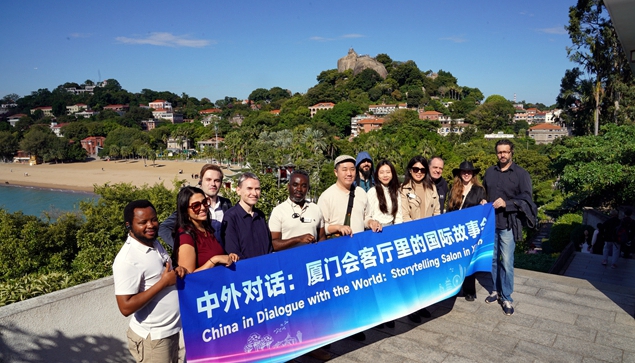According to World Bank data, approximately 60% of global GDP comes from port areas and urban bay areas, as well as their immediate hinterlands. The bays are rich in marine, biological and environmental resources and drive regional economic growth, with their development radiating out to surrounding areas. While driving economic development, urban bay areas around the world also face the same dilemma between economic development and ecological protection.
From November 25 to 27, the “Chinese Dialogue with the World: Telling Xiamen” meeting was held in Xiamen to explore how this typical Chinese bay city combines ecology and high-quality development. During the three-day activity, journalists and guests from 10 countries, including the United States, Britain, France, Japan and Egypt, visited Yundang Lake, the purification plant Gaoqi Water Park, Gulangyu Island, Xiatanwei Mangrove Park, and Wuyuan Bay Wetland Park. They also exchanged with experts in ecological and environmental protection on Xiamen’s practices in building an ecological civilization.
Journalists visit Gulangyu Island in Xiamen (Fujian)
Xiamen is located on the southeast coast of the country and the main urban area is island. “The sea is in the city and the city is on the sea,” said Zhou Lumin, a member of a Xiamen oceanology expert group. “Xiamen is rich in marine resources, but the area is relatively small and the ecosystem is relatively fragile. » Like many other bay area cities around the world, Xiamen also faces environmental problems like climate change, biodiversity loss and environmental pollution.
To solve these problems, Xiamen has taken a series of initiatives to improve the overall management of the coastal zone and strengthen marine ecological restoration, such as “One Bay, One Policy”, the construction of urban green roofs, the reconstruction of mangrove wetlands, the protection of rare marine species such as the white dolphin, as well as the release of fry into marine areas, all of which have achieved remarkable results. David Ferguson, an international communications expert, was deeply impressed by the local mangrove wetland restoration work after his visit to Xiamen. He pointed out that in many places in Asia, Central America and Africa, mangroves have been damaged during the construction of coastal urban areas. And to believe that Xiamen can benefit from its experience in protecting mangroves to other countries and regions.
Xiamen strives to strengthen international cooperation in ecological protection. This year was held the 19e consecutive edition of Xiamen International Ocean Week, and a large number of similar international exchange activities are held there every year. As early as 2013, Xiamen University established the science and technology innovation and service platform of the Maritime Monitoring and Information Service Center, bringing together experts from different backgrounds to form an interdisciplinary R&D team dedicated to technological innovation to promote the construction of marine ecological civilization and sustainable development in maritime areas.
Over the past 30 years, through all-round efforts and explorations in ecological protection and restoration, a “Xiamen Model” has been developed that harmoniously coexists with nature and promotes high-quality development and life. .








